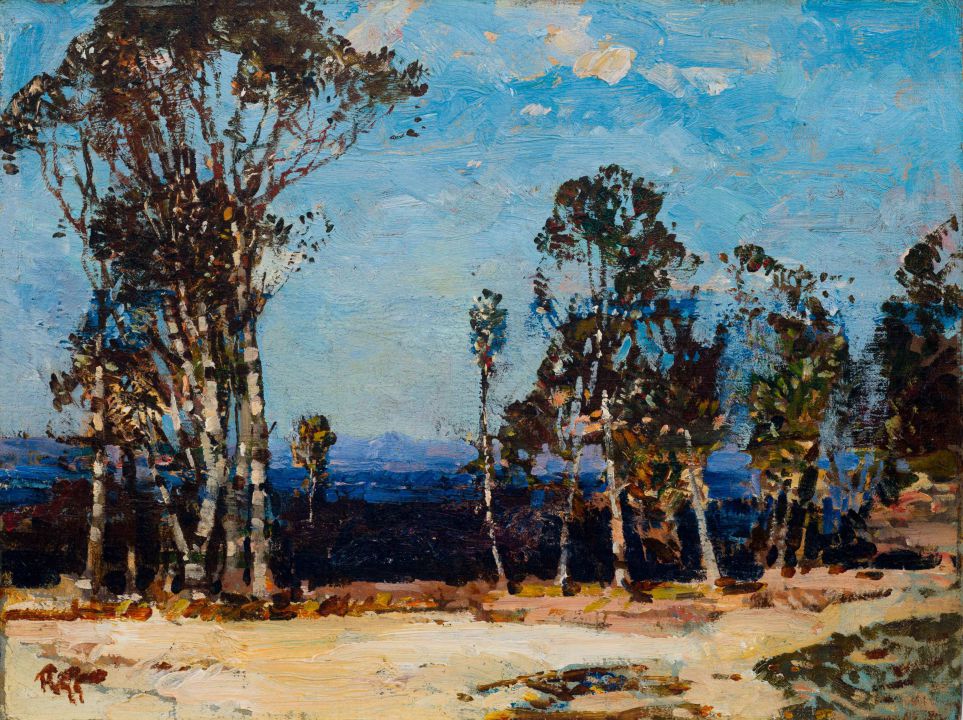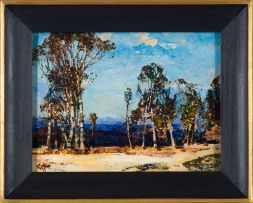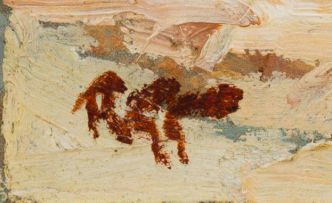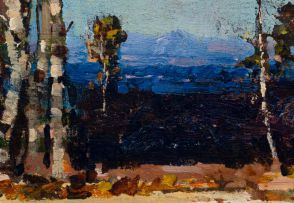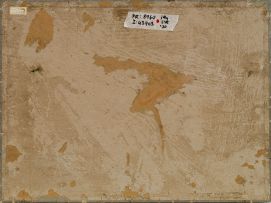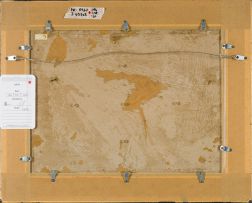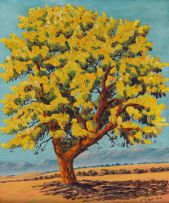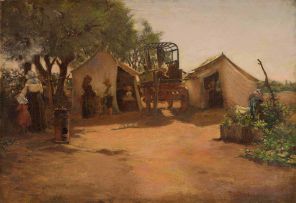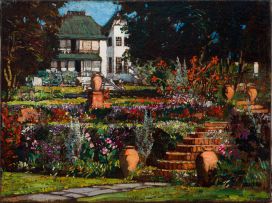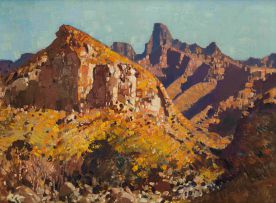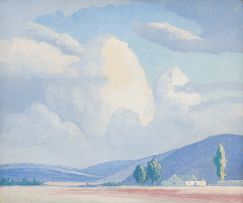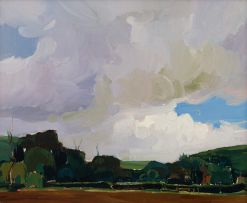Constantia Nek
Robert Gwelo Goodman
Incl. Buyer's Premium & VAT
About this Item
signed with the artist's initials
Notes
While undoubtedly one of the country's most accomplished painters, and a stand-out pastelist, Robert 'Gwelo' Goodman too often escapes the attention he deserves. Immersive and memorable paintings of Cape Town landmarks, quick and icy Drakensberg streams, quiet and ambassadorial interiors, flashy still lifes, and Cape Dutch façades in dappled light, all typically animated with short, flickering strokes of pure colour, mark out a prolific and impressive career. Major private collections have inevitably included choice examples, while few state institutions are without noteworthy Gwelos in their survey holdings. The six genre-spanning examples laid out here (Lots 262 to 267), executed in different mediums and across four different cities, give just a glimpse of the artist's skill, confidence and variety.
It is worth remembering that Robert Goodman was born in Taplow in Buckinghamshire in 1871. He moved with his family to the Cape in 1886 (the year Johannesburg was established and the year another great landscape painter, Henk Pierneef, was born in Pretoria). He took up lessons with the experienced Liverpudlian JS Morland, the first president of the South African Society of Artists, and at the turn of the century considered the doyen of local painters. With Morland's financial help, and on his advice, the young Goodman continued his training at the Académie Julian in Paris from 1895 - guided by William Bouguereau - before moving to London in 1897, where he based himself until 1915. He travelled frequently during this period, mainly to the Continent, but also to India and back to South Africa occasionally. Returning to England from South Africa in 1901, where he had recorded scenes from the Anglo-Boer War front, he chose to adopt the name Gwelo in the hope of standing out in the London art scene. This necessitated his now famous 'RGG' monogram.
Gwelo travelled widely in Europe, and clearly had an affection for Italy. He visited Venice in 1910, and was taken by the dancing light so unique to the city. Flashing colours glinting off water, and shadows settling on Istrian stone, particularly suited his pastel style. Lot 397 catches the artist working en plein-air overlooking , and justifies one of his often-quoted claims: 'Pastel is capable of a richness and velvety depth of colour impossible in any other medium'.1 In Lot 396 he chose to paint the Florentine skyline, across the Arno, probably from the Piazzale Michelangelo, in 1912. In this spirited picture the city is a shifting vision of terracotta, amber and white, anchored by the unmistakable silhouettes of Santa Maria del Fiore and the Palazzo Vecchio. It is particularly interesting to compare this picture to the later views he painted of the Cape Town City Bowl from Bo-Kaap (see Lot 565, October 2018), or the Bay of Natal from the Berea (see Lot 307, November 2018).
From the late 1910s and early 1920s, having returned to Cape Town permanently in 1915, he produced a broad series focused on Cape Homesteads (of which the illustrations for Dorothea Fairbridge's Historic Houses of South Africa, published in 1922, was only a small part). During this period, he notably introduced interiors and still lifes into his exhibitions too, perhaps as a reaction to the market. Lot 392, Copper Pot with Aloes, is a fine example of the latter genre: the pot's reflective quality is skilled, while the gleaming crimson of the tubular flowers are in striking contrast with the patchwork of grey, lilac and cream dabs that form the background.
Gwelo's interest in Cape vernacular architecture moved to a practical conclusion: towards the end of his career, and often working alongside Ivan Mitford-Barberton in the then Natal Province, he played a major role in the so-called Cape Dutch Revival. Although he never received formal training, many of his renovations, adaptations and designs made a lasting-enough impact to establish a style of sorts: 'Gwelo Colonial' was a term loosely used on the Natal coast well after the artist-architect's death. His first serious foray into architecture, however, was in assisting with the restoration of Woodley, the home of Douglas Mackeurtan in Musgrave Road, Durban. If some of the correspondence between him, Mackeurtan and the architect Wally Paton is to be believed, Gwelo's prescriptive design suggestions were rarely questioned. Lot 393 shows Woodley's white-washed, Goodman-Paton façade set high on a slope above remarkable gardens. The surface of the painting is nothing short of jewel-like: controlled dashes of lime, vermillion, yellow and violet create a beautiful, shimmering effect. Gardens were certainly a favourite subject for the artist, and other outstanding examples, whether painted outside Newlands House (see Lot 361, June 2012) or even facing towards the Crown Mines (see Lot 356, June 2012), have appeared in Strauss & Co salerooms over the past few years.
In most minds, Gwelo was a painter of evocative landscapes. Two typical examples, provinces apart, are featured here: Lot 394 shows a cluster of wind-beaten pines in front of a dramatic, hazy Cape panorama; while Lot 395 takes us up into a wintry Drakensberg, with Mont-aux-Sources on the horizon and the nearer peaks and rockfaces glinting in the sunshine.
Supposedly distrustful of the auction process, Gwelo made arrangements in his will to have the remnants of his studio, including a number of fine paintings and pastels, exhibited at Cannon House, his home in Newlands, and then sold in situ. He died in March 1939.
1. Joyce Newton Thompson (1951) Gwelo Goodman: South African Artist, Cape Town: Howard Timmins, page 29.
